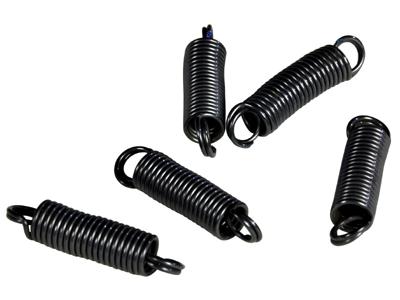How Can Nitinol Make A Sprinkler Switch On
A nickel–titanium alloy, also known as Nitinol, is a binary alloy composed of nickel and titanium. The two elements exhibit approximately equal atomic percentages (Nitinol 55 and Nitinol 60 are common). Due to temperature variations and mechanical stress, Nitinol displays two distinct crystal structure phases, namely the austenitic phase and the martensitic phase.

In Nitinol, the austenite is the parent phase. It is the crystal structure at elevated temperatures. When the temperature decreases, austenite gradually converts into martensite.
During the conversion from martensite to austenite, four temperature definitions are used:
As: the temperature at which conversion from martensite to austenite begins during heating.
Af: the temperature at which conversion from martensite to austenite completes during heating.
Ms: the temperature at which conversion from austenite to martensite begins during cooling.
Mf: the temperature at which conversion from austenite to martensite completes during cooling.
The phase transformation exhibits thermal hysteresis; consequently, As does not equal Mf, and similarly, Af does not equal Ms.
Nitinol exhibits two properties: the shape memory effect (SME) and superelasticity (SE).

1. Shape Memory
When the parent phase, in a specific shape, is cooled from a temperature above Af to one below Mf, it completely transforms into martensite. Martensite becomes deformed below Mf. When reheated to a temperature below Af, the material reverts to the parent phase by phase reversion. This process is a thermally induced phase transition in Nitinol. Nitinol can be deformed at a defined temperature and recovers its original, undeformed shape when heated above its transition point.
2. Superelasticity
Superelasticity refers to the phenomenon in which an external force induces strain exceeding the elastic limit. Upon removal of the load, the strain recovers automatically. In the parent phase, external stress triggers a transformation to martensite. This alloy exhibits mechanical behaviour that differs from that of conventional materials. Its elastic limit is higher than that of ordinary materials. Hooke’s law becomes inapplicable in this regime. Unlike the shape memory effect, the superelastic response does not require thermal input.

 Bars
Bars
 Beads & Spheres
Beads & Spheres
 Bolts & Nuts
Bolts & Nuts
 Crucibles
Crucibles
 Discs
Discs
 Fibers & Fabrics
Fibers & Fabrics
 Films
Films
 Flake
Flake
 Foams
Foams
 Foil
Foil
 Granules
Granules
 Honeycombs
Honeycombs
 Ink
Ink
 Laminate
Laminate
 Lumps
Lumps
 Meshes
Meshes
 Metallised Film
Metallised Film
 Plate
Plate
 Powders
Powders
 Rod
Rod
 Sheets
Sheets
 Single Crystals
Single Crystals
 Sputtering Target
Sputtering Target
 Tubes
Tubes
 Washer
Washer
 Wires
Wires
 Converters & Calculators
Converters & Calculators
 Write for Us
Write for Us



 Chin Trento
Chin Trento



